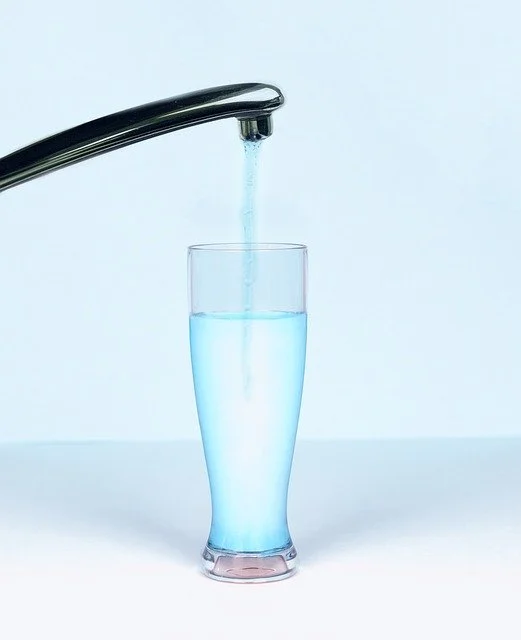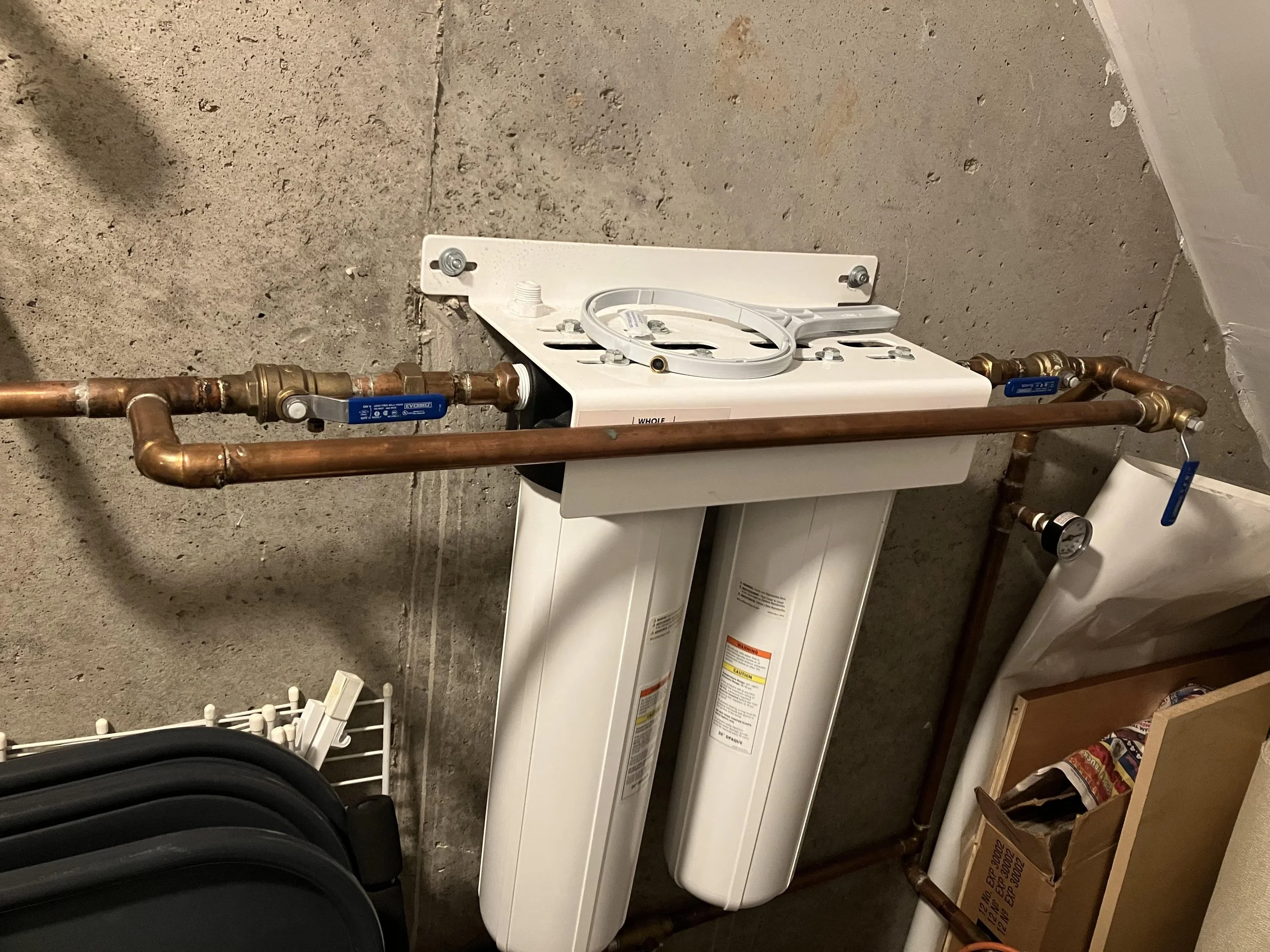Water Filtration
Are you frustrated with the taste of chlorine in your water?
Are you looking at ways to reduce contaminants in your water beyond the federal standards?
Clients have been asking me recently about my choices for water filtration. Over the last 4 years, my family installed three different water filtration methods. I'll share what we chose for the different applications and how we installed it.
Gravity Filter/ Pitcher
At the office, I didn't have the option to install a faucet or whole system filter. The taste of chlorine impeded me from drinking enough water throughout the day, and I wanted my clients to feel comfortable replenishing after a session with clean water.
I chose a standalone gravity filter: the ZeroWater 5-stage filter. This filter removes heavy metals, sediment, chlorine and other chemicals, and prevents bacterial growth. The glass dispenser feels cleaner than plastic, and I really like the taste of this water!
Another great option is the Big Berkey external water container.
Whole House Filter
We chose to install a whole house filter in our home. These filters are a great way to remove chlorine, chemicals, sediment, and heavy metals from all water used in the house.
The largest organ of the human body is the skin. Our skin is the ultimate membrane: releasing toxins from within the body in the form of acne, rashes, odors, and more, and absorbing chemicals from our environment.
In order to protect the health of my family, I wanted to filter the water consumed in kitchens and bathrooms, as well as water used on our skin in sinks, showers, and baths.
We chose the Home Master sediment filter and the Home Master Catalytic Carbon filter, which remove heavy metals, chemicals, pesticides, and disinfectants.
To install this filter, we included several bypasses in the plumbing. Here are some tips!
- Install the whole house filter after the sprinkler system in your home. In this way, you avoid the extra cost of filtering thousands of gallons of water that is used on the lawn and garden.
- When changing a whole house filter, water needs to be shut off to the filter. It can be tedious to turn off the water throughout the entire house, drain the pipes, replace the filter, and bleed air out of the pipes.
To improve the ease of changing the filter each year, install a diversion and valve. Water can either flow through the filter, or be diverted (with an on/off valve) to avoid the filter. When changing the filter, simply divert the water, drain the pipes directly at the filter, replace the filter, and re-flow the water through the filter. All of this can be achieved without using the water shutoff in your home!
Filter at the Tap
I wanted to filter fluoride from the city water; fluoride is a neurotoxin and my family is sensitive to these chemicals, even at federally-defined safe limits.
It is difficult and expensive to find a whole house filter that includes fluoride filtration. Therefore, we decided to install an under-the-counter filter at our kitchen tap. This allows any drinking and cooking water to include this additional cleansing step.
We chose the Crystal Quest Under-the-counter Fluoride filter.
- This requires a hole at the sink for the filtered faucet. Rather than drill another hole in the countertop, consider using the hole for your soap dispenser or water sprayer. Water sprayers are often built into sink faucets these days, and no longer require the hole.
- The Crystal Quest company also offers a 3 filter option under the sink, which could be used if a whole house system is not in place.
- There are many reverse osmosis systems on the market. We were not interested in the waste water produced or the lack of minerals in the filtered water. However, this may be the right option for you!
Conclusion
Water filtration technology continues to evolve. I highly recommend that you do your own research to find the best water filtration options when you navigate this for your family.
If you have any questions about our experiences, don't hesitate to reach out.
Enjoy your clean water!




